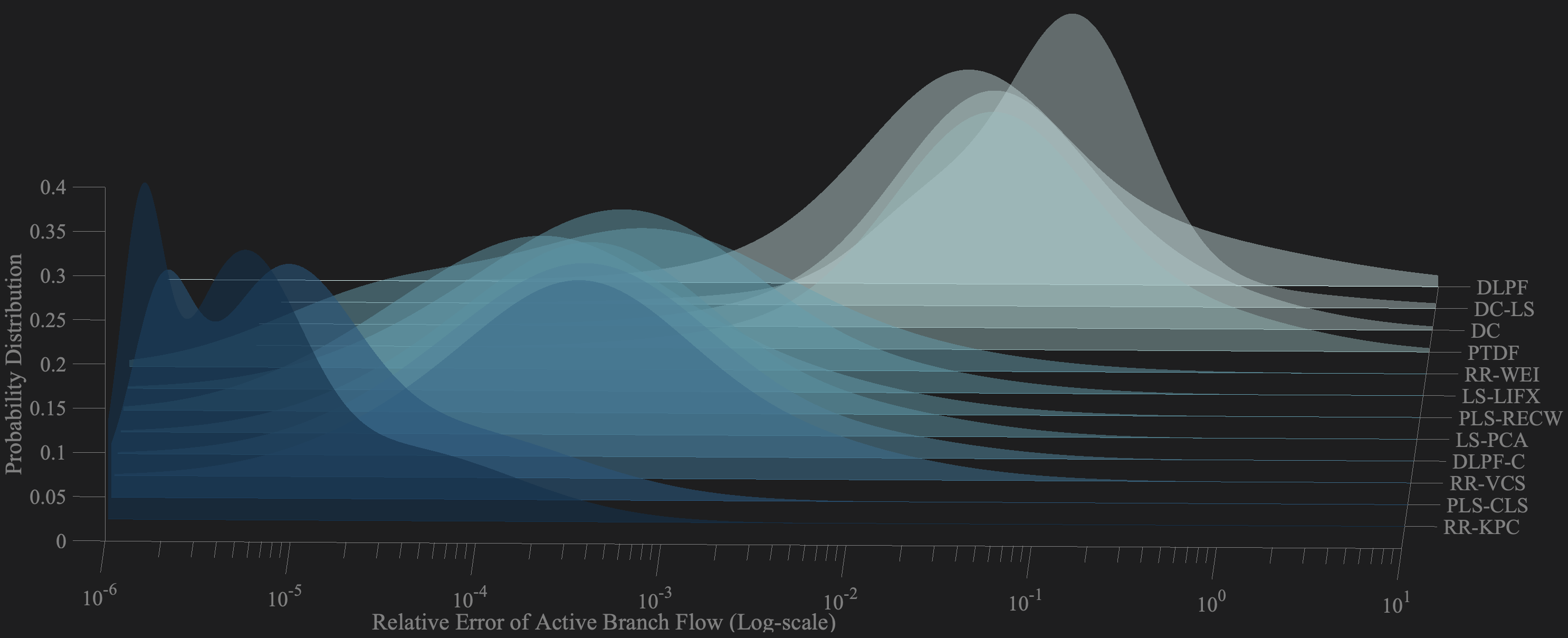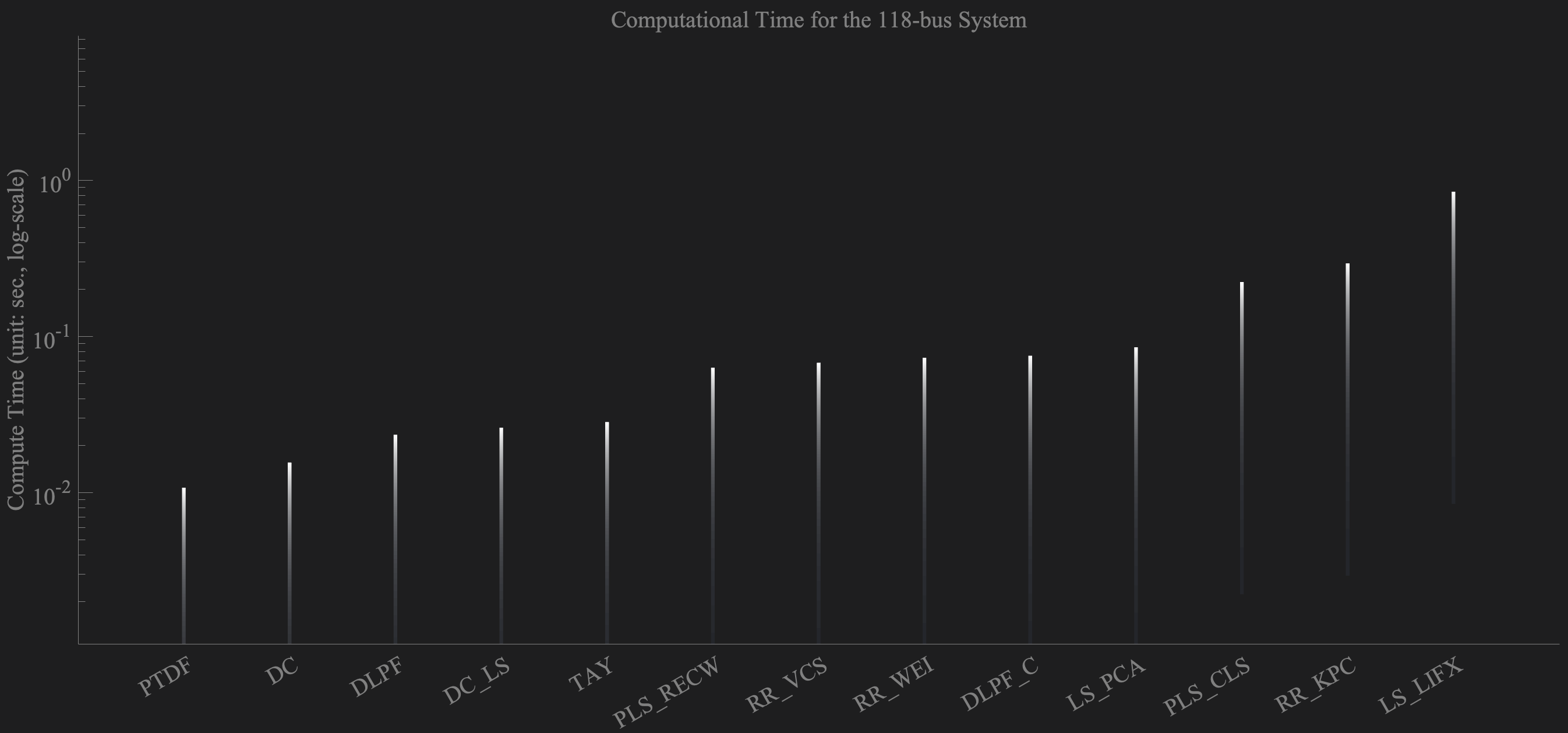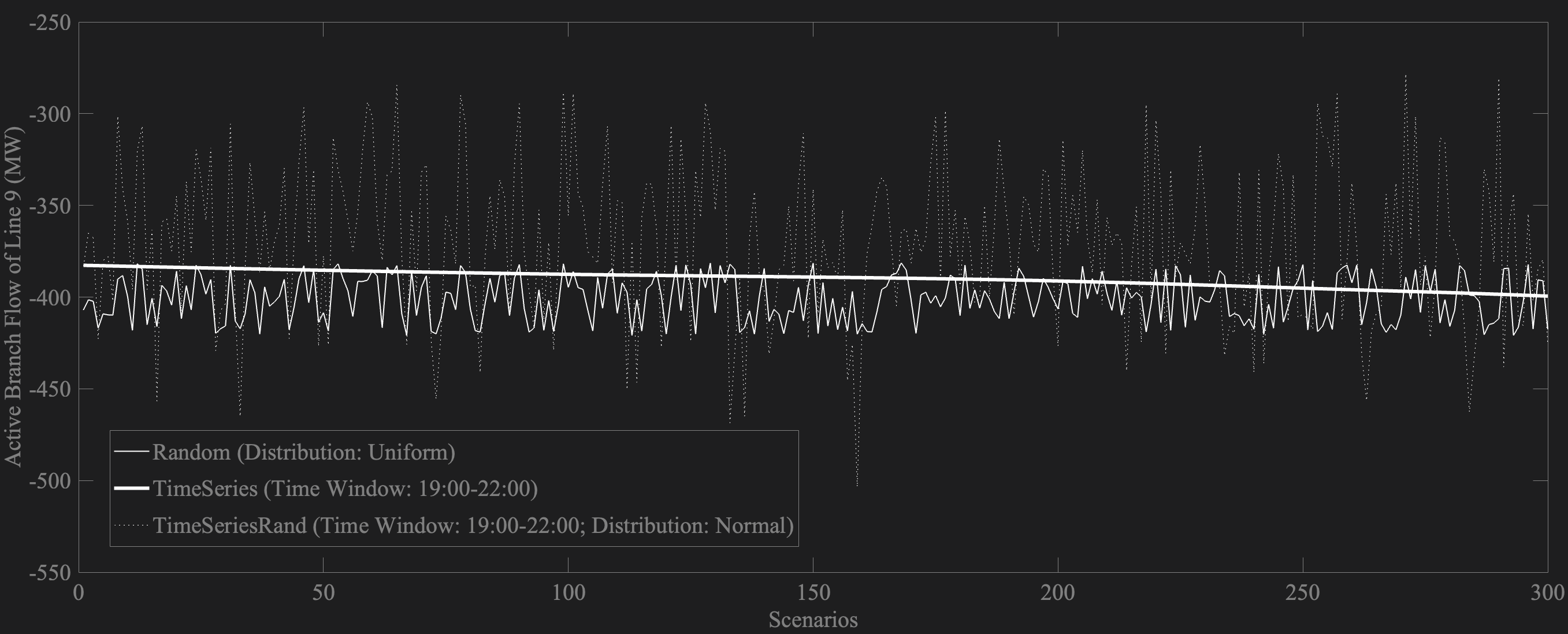
Get Data. Choose Methods. Build Models.
Free to use. Quick to deploy. Easy to code.
For physics-informed data-driven power flow identification — and beyond.
model = daline.all('case118')data = daline.generate('case.name', 'case118')opt = daline.setopt('noise.SNR_dB', 45)data = daline.noise(data, opt)data = daline.outlier(data, 'outlier.switchTrain', 1, 'outlier.percentage', 2.5)data = daline.denoise(data, 'filNoi.switchTrain', 1, 'filNoi.useARModel', false)opt = daline.setopt('filNoi.useARModel', false, 'filNoi.zeroInitial', 0)data = daline.deoutlier(data, opt)data = daline.normalize(data, 'norm.switch', 1)data = daline.data('num.trainSample', 500, 'num.testSample', 300)opt = daline.setopt('data.baseType', 'TimeSeriesRand', 'method.name', 'RR')data = daline.data('data.program', 'acpf', 'data.baseType', 'TimeSeriesRand')model = daline.all('case118', 'method.name', 'RR')data = daline.generate('case.name', 'case118')data = daline.data('case.name', 'case39')time_list = daline.time(data, {'LS', 'LS_SVD', 'RR'}, 'PLOT.repeat', 5, 'PLOT.style', 'light')opt = daline.setopt('method.name', 'LS_PIN', 'variable.predictor', {'P', 'Q'}, 'variable.response', {'PF'})model = daline.fit(data, opt)opt = daline.setopt('method.name', 'LS_SVD', 'variable.response', {'PF'})model = daline.fit(data, opt)model = daline.fit(data, 'method.name', 'LS_COD')model = daline.rank(data, method, opt)opt = daline.setopt('data.program', 'acpf')data = daline.data(opt)model = daline.all('case118', 'method.name', 'RR')data = daline.generate('data.baseType', 'TimeSeriesRand')model = daline.fit(data, opt)model = daline.fit(data, 'method.name', 'LS_COD')model = daline.fit(data, 'method.name', 'LS_HBLE', 'HBL.language', 'yalmip', 'HBL.solver', 'quadprog', 'HBL.programType', 'whole')model = daline.fit(data, 'method.name', 'LS_LIFX', 'variable.liftType', 'polyharmonic', 'variable.liftK', 2)model = daline.fit(data, 'method.name', 'LS_WEI')model = daline.fit(data, 'method.name', 'DRC_XYM', 'DRC.probThreshold', 90, 'DRC.gamma2', 0.5, 'DRC.language', 'cvx', 'DRC.solverM', 'Mosek', 'DRC.programType', 'whole')model = daline.fit(data, 'method.name', 'LS_REC', 'LSR.recursivePercentage', 30, 'LSR.initializeP', 0)model = daline.fit(data, 'method.name', 'LS_REP', 'LSR.recursivePercentage', 75)model = daline.rank(data, {'DLPF_C', 'RR', 'PLS_REC'}, 'RR.lambdaInterval', 1e-5, 'RR.cvNumFold', 4, 'PLS.recursivePercentage', 40)time_list = daline.time(data, {'LS', 'LS_SVD', 'RR'})model = daline.fit(data, 'method.name', 'LS_PIN')model = daline.fit(data, opt)model = daline.fit(data, 'method.name', 'LS_COD')model = daline.fit(data, 'method.name', 'LS_HBLE')model = daline.fit(data, 'method.name', 'LS_LIFX')model = daline.fit(data, 'method.name', 'LS_WEI')model = daline.fit(dataN, 'method.name', 'DRC_XYM')model = daline.fit(data, 'method.name', 'LS_REC')model = daline.fit(data, 'method.name', 'LS_REP')model = daline.rank(data, {'DLPF_C', 'RR', 'PLS_REC'})time_list = daline.time(data, {'LS', 'LS_SVD', 'RR'})model = daline.fit(data, 'method.name', 'LS_PIN')model = daline.fit(data, 'method.name', 'LS_SVD')model = daline.fit(data, 'method.name', 'LS_COD')data = daline.data('case.name', 'case39')opt = daline.setopt('variable.predictor', {'P', 'Q'}, 'variable.response', {'PF', 'Vm'})daline.rank(data, methods)daline.rank(data, methods, 'PLOT.response', {'Vm', 'PF'})daline.rank(data, {'TAY', 'QR'}, 'PLOT.theme', 'commercial', 'PLOT.style', 'light')daline.time(data, methods)daline.time(datalist, methods)data = daline.data('case.name', 'case39')opt = daline.setopt('variable.predictor', {'P', 'Q'}, 'variable.response', {'PF', 'Vm'}, 'PLOT.repeat', 5, 'PLOT.style', 'light')time_list = daline.time(data, 'LS', 'LS_SVD', 'RR', opt)opt = daline.setopt('method.name', 'LS_PIN', 'variable.predictor', {'P', 'Q'}, 'variable.response', {'PF'})model = daline.fit(data, opt)opt = daline.setopt('method.name', 'LS_SVD', 'variable.predictor', {'P', 'Q'}, 'variable.response', {'PF'})model = daline.fit(data, opt)opt = daline.setopt('method.name', 'LS_COD', 'variable.predictor', {'P', 'Q'}, 'variable.response', {'PF'})model = daline.fit(data, opt)model = daline.rank(data, method, opt)data = daline.generate('case.name', 'case118', 'data.program', 'acpf', 'data.baseType', 'TimeSeriesRand')opt = daline.setopt('noise.switchTrain', 1, 'noise.switchTest', 1, 'noise.SNR_dB', 45)data = daline.noise(data, opt)data = daline.outlier(data, 'outlier.switchTrain', 1, 'outlier.percentage', 2.5)data = daline.denoise(data, 'filNoi.switchTrain', 1, 'filNoi.useARModel', false)opt = daline.setopt('filNoi.switchTrain', 1, 'filNoi.useARModel', false, 'filNoi.zeroInitial', 0)data = daline.deoutlier(data, opt)data = daline.normalize(data, 'norm.switch', 1)data = daline.data('case.name', 'case118', 'num.trainSample', 500, 'num.testSample', 300, 'data.program', 'acpf', 'data.baseType', 'TimeSeries', 'noise.switchTrain', 1, 'outlier.switchTrain', 1, 'norm.switch', 1)opt = daline.setopt('data.baseType', 'TimeSeries', 'method.name', 'RR')data = daline.data('case.name', 'case118', 'data.program', 'acpf', 'data.baseType', 'TimeSeries')opt = daline.setopt('case.name', 'case57', 'data.program', 'acpf', 'data.baseType', 'TimeSeries'); data = daline.data(opt)model = daline.all('case118', 'data.baseType', 'Random', 'method.name', 'RR')
Utilize or compare over 55 methods using one line of code in Daline

Get accuracy ranking for any states of any methods by a simple Daline command

One simple command in Daline can tell you which method is faster

Or, tell you which method is more scalable

Generate, pollute, clean, and normalize (optimal) power flow data with numerous customization in one Daline command

-
Latest Advancements
Provides users with access to the latest advancements in power flow linearization, enabling rapid model acquisition and flexible customization and extension of accurate and computationally efficient approaches.
-
High Flexibility
With an user-friendly architecture that supports over 300 adjustable parameters and options, offering extensive flexibility to meet diverse research and educational needs.
-
Minimal Coding
Crafted for simplicity, enabling users to accomplish complex tasks with minimal coding, often requiring just one or two lines of code.









